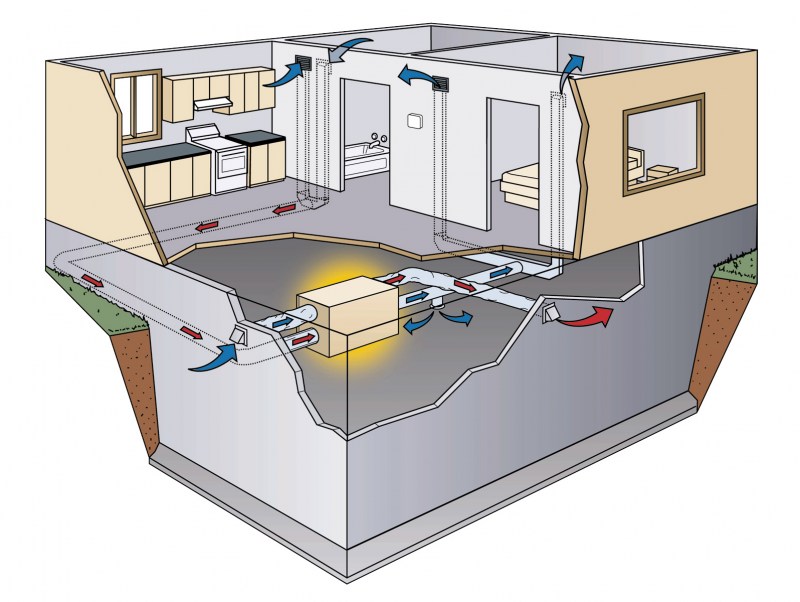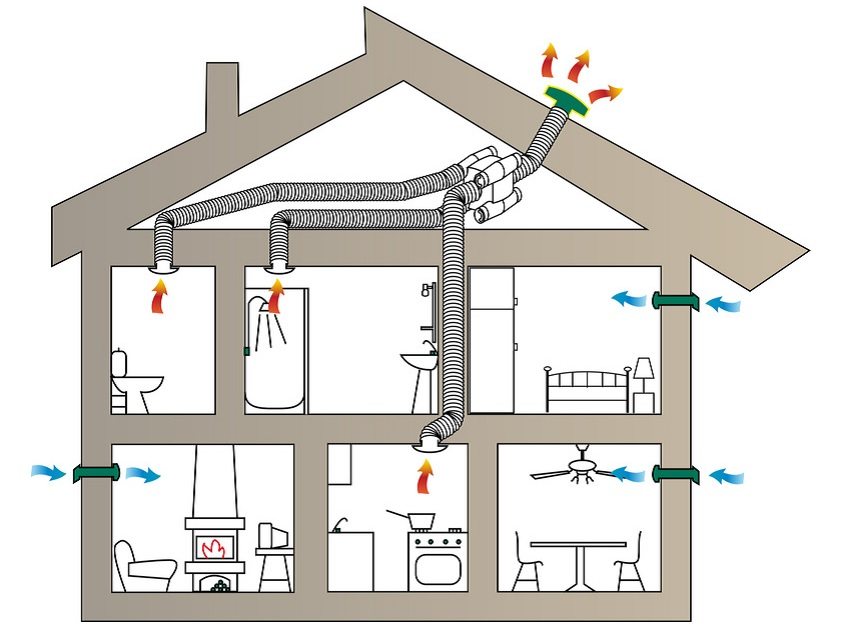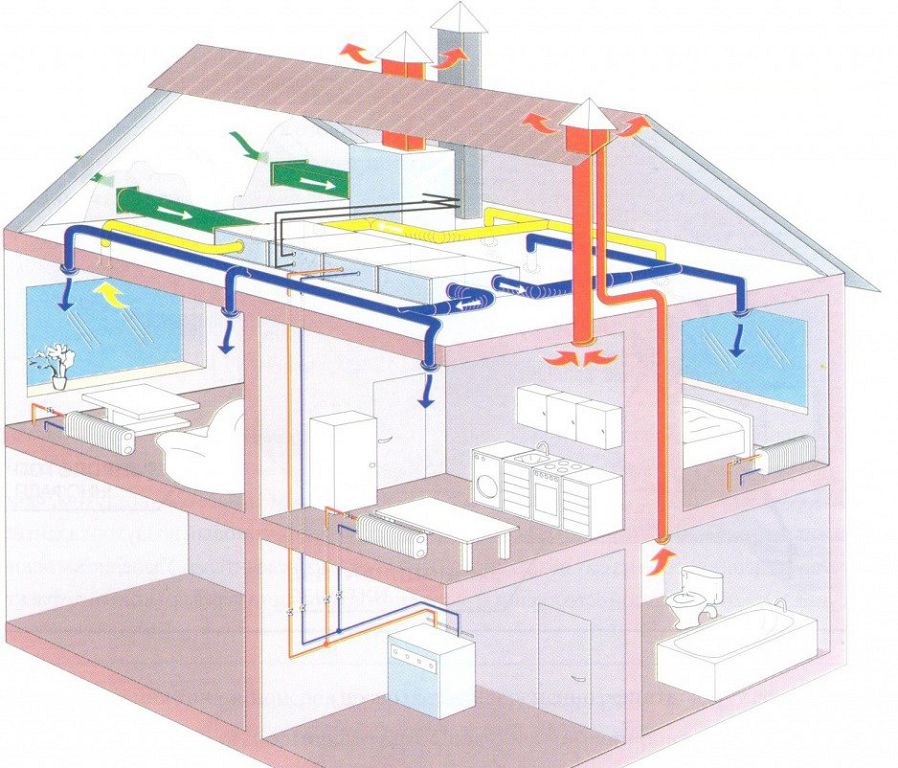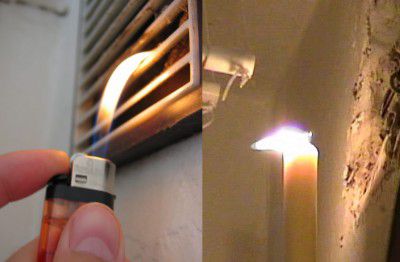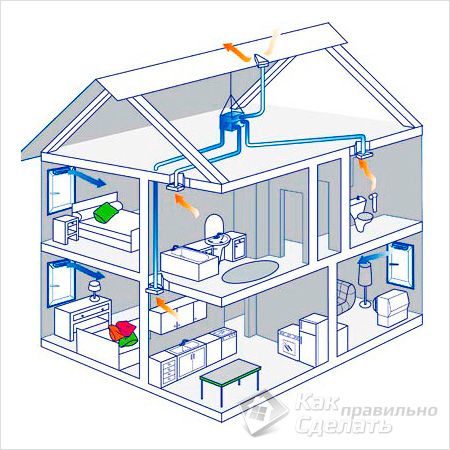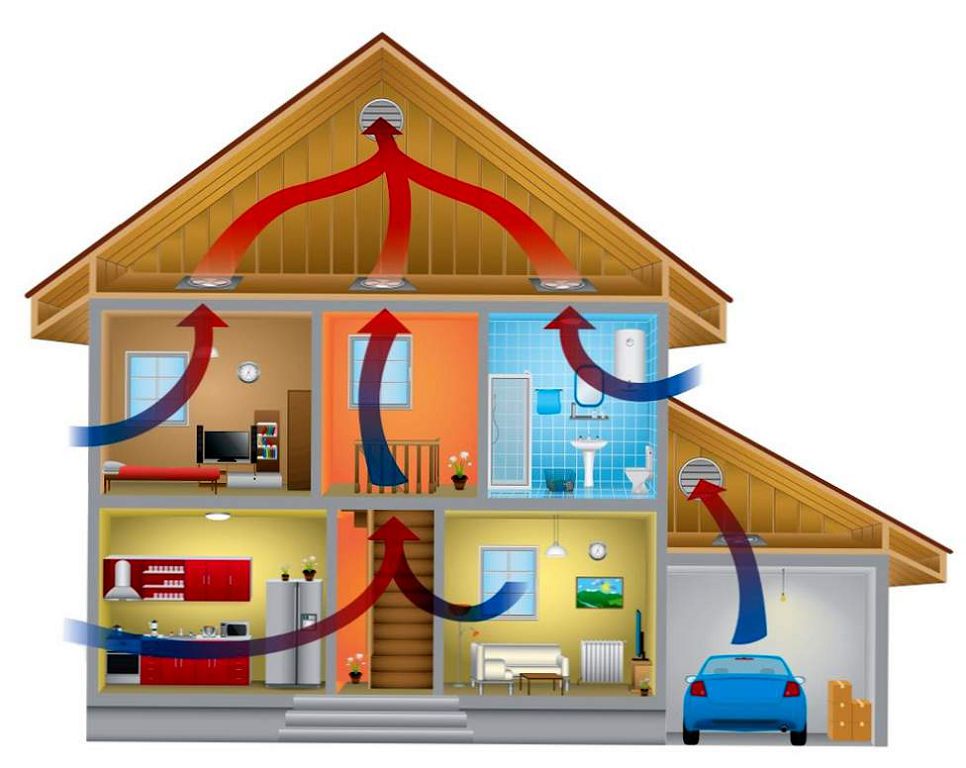Modern ventilation systems for a private house supply the flow of fresh air into the rooms and distribute it efficiently throughout the day. Supply ventilation filters the air supplied to the house; a conventional air duct system is used for operation. At the same time, the installation ensures the supply of clean and humid air to the house at a temperature that is comfortable for a person.
Varieties of air renewal systems in the house
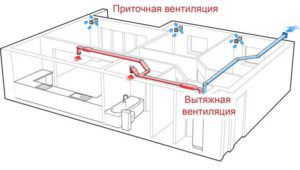
As a system for providing access to fresh air mixture in a private house, one of three options can be used:
- natural ventilation;
- forced ventilation;
- mixed ventilation system - natural ventilation together with the device where the hood is used.
Each of these options has its own advantages and disadvantages, therefore, the choice is made by each owner of a private house, depending on their own wishes and some other factors.
Varieties of supply units
Supply ventilation systems existing at the moment can be divided into two main categories:
- natural;
- forced.
The intake of air into the dwelling, which is carried out due to the difference in temperatures inside and outside, or as a result of the influence of the wind, is the natural supply ventilation of the room.
In the first case, the movement of the air mixture occurs as a result of heating the ventilation ducts. In the second case, air currents move as a result of the influence of the wind, which directs the air into the room.
The advantage of operating this type of systems is that there is no need to install expensive equipment. In such a system, no moving elements are used - electric motors, fans and the like, which have a limited service life. Thanks to this, the system continues to operate even if the power is cut off.
The use of forced-type forced ventilation is required when it is necessary to ensure constant active air exchange in the house.
Forced systems are capable of supplying heated or cooled air to the premises, which is especially important in the cold and hot seasons. In addition, the supplied mixture is completely cleaned of dust and various impurities before entering the house. It should also be noted that such installations provide an even distribution of air throughout the house, which is an effective method of combating condensation on the windows.
Ventilation equipment of this type is usually used in production and in office premises, where it is necessary to ensure active air exchange throughout the day. But even in private houses, the use of air supply units is not at all uncommon.
What is forced ventilation
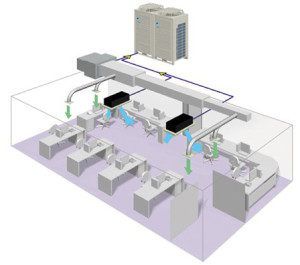
This is an installation that provides the house with a clean air mixture, it includes: an air supply unit, grilles for channels and air ducts. The supply unit itself consists of:
- air filter;
- shut-off valve;
- a heater that makes the air mixture warm in winter;
- fan;
- a silencer that ensures quiet operation of the device.
When operating such a device for a private house, fresh air mixture is supplied to the living quarters, and the spent air is drawn through the ventilation ducts of the bathroom, kitchen and bathroom. For the normal functioning of the system in the house, supply grilles must be installed on the doors.
It is clear that it is not rational to rely only on natural ventilation in a private house, as a result of which the installation of such a system will ensure high-quality air exchange in the home by constantly supplying clean air to it.
Air handling units of different power levels, which can be easily found on the modern market, have the ability to provide service to both compact and large-sized premises. As a result of all this, all residents of the house receive air that is completely safe for their health, which is completely devoid of any harmful impurities, dust and unpleasant odors.
Thus, supply ventilation in the house is a reliable guarantee of high-quality air exchange with a low level of electricity consumption.
Main components and operating principle
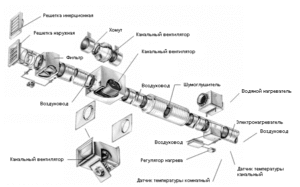
Among the main components of the supply-type ventilation system, the following should be highlighted:
- Air valve. Due to its presence, the air mixture enters the house only if the device is turned on.
- A filter element that purifies the air from various odors, dust particles and other contaminants. The set of filters used and their quality determine the level of purification of the air mixture.
- Heater. Thanks to its work in winter, the heated mixture will enter the room, and not the cold one. Such an element can be water or electric.
- One of the most important elements is the fan, which supplies air to the house. This is done as a result of the pressure that it creates in the system.
- The muffler reduces the noise level that occurs during the operation of the system.
Therefore, the main purpose of using the air handling unit is the forced supply of air purified from various toxins and dust into the house, which is warmed up to the required temperature.
The air mixture before entering the dwelling lends itself to different degrees of purification from various pollutants. As for the temperature of the discharged mixture, then forced ventilation is a way to both heat it up and cool it to a suitable temperature - it all depends on the conditions under which the ventilation works.
It is because of this that this type of air exchange system is very popular in private houses of various types, where it is important to provide comfortable conditions for a person. It is important to remember that using a device of this type is allowed only in rooms without dampness, excess moisture and gas formations. Therefore, supply ventilation is not intended for bathrooms, kitchens, showers.
During the operation of such an air-cleaning system, an increased pressure is created, which forces the spent air mixture to leave the dwelling through the cracks of windows and doors, as well as free ventilation ducts. Thus, the air is removed naturally.
Disadvantages of using a supply unit
Despite the significant number of advantages of using the air supply unit in private homes, it also has some disadvantages, which are most noticeable when designing and installing the system in places where there is a dense residential building. Such problems are associated with a lack of space for the normal installation of such a device, since it requires a certain free space to fulfill all the necessary requirements and norms.
Often, the installation of such a type of ventilation during its operation creates a certain noise, which causes certain inconveniences for the residents.In order to qualitatively solve such a problem, the use of vibration-insulating and sound-insulating materials is required. However, the implementation of such work implies additional material costs.
Installation for rooms with plastic windows
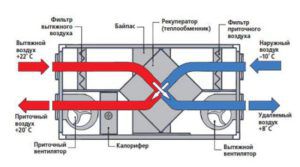
As already noted, air removal from the room where the supply ventilation is installed is carried out in a natural way. In the same private houses where hermetic plastic windows are used, such air removal is impossible.
It is for such cases that the air handling units are designed. Their main difference from conventional air handling units is that they are able to provide both the inflow of fresh air and the removal of exhaust air. In addition, such systems also control the humidity in the room well.
Most often, air handling units are used in spacious public spaces, but it is easy to find compact units for private houses that are easy to install. They can be mounted both from the outside of the room and from the inside, making two through holes in the wall for this.
Such installations, by means of recuperation, provide heating of the air mixture entering the house. This method implies a reduction in material costs for heating. In addition to recuperation, air heating can also be carried out by a conventional heater - water or electric.
In addition to the main components of the system, which both the supply and supply and exhaust devices have, the latter also differs in some additional elements. Among them:
Air duct grill. It is located from the outside of the room and does not allow foreign objects to enter the air duct.
Air distribution devices that control the outflow and inflow of air. There are a large number of installations of this type, all of them are characterized by their design and operational parameters.
A regulator that controls the speed of the fan. Thanks to this, the amount of air that is supplied to the room is regulated.
A regulator that allows you to set a comfortable air temperature for a person.
Temperature sensor that works in conjunction with the regulator. It ensures accurate maintenance of the required temperature level inside the dwelling.
Thus, supply ventilation is a reliable and proven way to ensure a constant supply of clean air mixture into the house, which always has a comfortable temperature.

